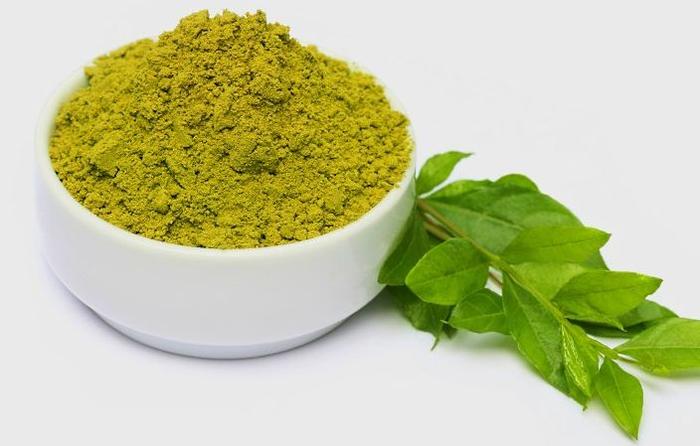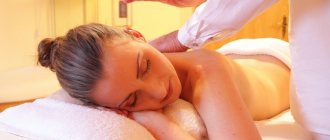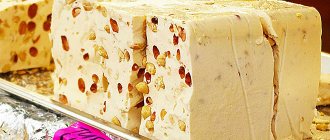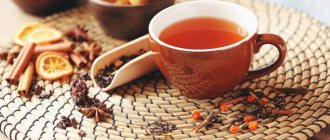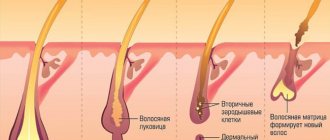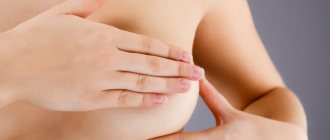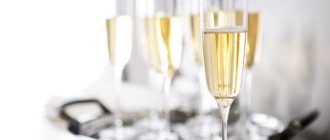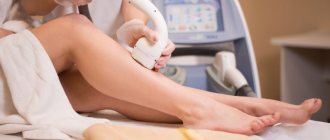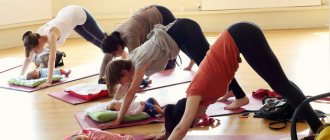The birth of a baby imposes additional responsibilities on the mother's life. Nutrients, drugs and toxins easily pass into breast milk and then into the baby's body. Now a woman should be more attentive to the choice of household chemicals, cosmetics, in particular hair dyes. The latter can affect the baby’s health, so before you decide to dye your hair while breastfeeding, you need to weigh the pros and cons.
Is it possible to dye your hair while breastfeeding?
Hair dye is a product of the chemical industry, and therefore contains synthetic, often toxic substances. In contact with the scalp, a small part of them is absorbed into the woman’s blood, and from there it passes into breast milk.
However, this is not the main danger. Many paints have a strong chemical odor, which is mainly due to the ammonia content. Harmful volatile vapors instantly enter the mother’s lungs, and from there into the blood (within half an hour), and in much larger quantities than through the skin. Thus, breast milk is saturated with harmful carcinogens, which can cause significant harm to the baby, especially if the woman often resorts to the dyeing procedure.
If you consume such milk, your baby may experience food poisoning. Another danger is an allergic reaction in the baby. Moreover, it can manifest itself not only as a rash, but also as a more serious symptom - swelling of the larynx (if timely assistance is not provided, this can even lead to death).
For some time after dyeing, the woman emits a specific chemical smell that the baby does not like. And it is likely that he will refuse to take his mother’s breast.

The baby may not like the unusual chemical smell emanating from the mother, and he will simply refuse to latch on to the breast.
Another point that a nursing mother should take into account is that after childbirth, a woman’s hormonal levels change greatly. Because of this, the hair color may turn out uneven, and the shade itself will not be very similar to the desired one.
In addition to these negative aspects, hair coloring also benefits a nursing mother. First of all, it is emotional comfort and confidence in one’s attractiveness. And this is very important for the psyche, especially in the postpartum period. Mommy, who regularly lacks sleep, is tired and lacks time, will be especially pleased to enjoy her beautiful reflection in the mirror.

Beautiful hair color will make a woman calmer and more confident, which, of course, will have a good effect on lactation
And the good mood and calmness of a nursing woman directly affects a sufficient level of lactation, and therefore the health of the baby.
In addition, many modern paints are produced without ammonia. On the contrary, they contain natural oils and vitamins that give hair shine, silkiness, improve its structure, and prevent hair loss.
Can hair coloring harm your baby?
The issue of coloring curls is very acute; it’s all about the negative impact of toxic substances on the baby’s body. Chemical paint contains substances that penetrate a woman’s blood through the lungs, and after that the poisons enter the milk. For this reason, you should take care of the child’s health and select natural formulations; coloring agents should not contain ammonia.
The harmful effects may not be noticeable at first, but it will manifest itself as poisoning or an allergic reaction in the infant. The mother should be careful about the procedure and also perform the coloring technique according to the rules in order to reduce the negative impact on the baby. According to the doctor, you can use henna-based dyes or folk remedies to change the color of your hair.
We recommend reading: Motherwort while breastfeeding: can you drink it, dosage
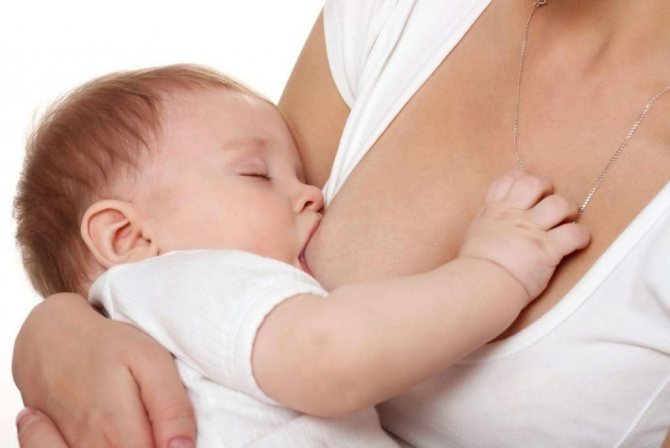
Contraindications for using paint
There are a number of circumstances in which hair coloring is strictly contraindicated.
- First of all, this is an allergic reaction to paint components. Not without reason, all manufacturers indicate on the packaging that it is necessary to carry out an allergy test one day before using the product (apply a little paint to the elbow and monitor the reaction for 24 hours). Moreover, this applies not only to chemical dyes, but also tonics and natural henna and basma. As for a nursing mother, due to the restructuring of the body in connection with pregnancy and childbirth, she may develop an allergy even to a repeatedly tested brand.
- Another contraindication to dyeing is bronchial asthma in a woman. After all, the volatile components of chemicals directly enter the respiratory tract.
- It is strictly forbidden to dye your hair if there are open wounds on the skin: the components will penetrate into the blood very quickly.
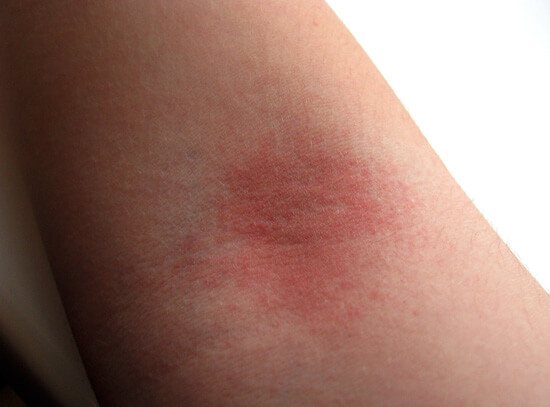
A rash or redness on the code after applying the dye indicates an allergic reaction to the hair dye.
How to dye the hair of a nursing mother?
It is necessary to dye your hair during breastfeeding according to time, as well as strictly following the technology. There are several recommendations that a nursing mother should follow in order to get the desired hair color:
- When using chemical dyes, the paint should be diluted strictly according to the specified technology, and the exposure time is kept to a minimum. It’s even better if a woman reduces the time the composition is exposed to the curl by about 10 minutes.
- The use of natural dyes does not harm the child, so you can keep the composition as long as necessary.
- To update your hairstyle, just highlight the strands in a suitable shade.
- It is recommended to apply the dye to your hair, retreating a few millimeters from the roots.
- You should not radically change your appearance, since a noticeable change in color requires prolonged exposure to paint and the use of strong substances.
- It is best to carry out dyeing in a ventilated area so that the nursing mother inhales as little vapor from the composition as possible.
We recommend reading: Lizobakt during breastfeeding

The nuances of coloring during lactation
Every nursing woman who is used to dyeing her hair wants to make this procedure as safe as possible for her baby. You can put your appearance in order by following a number of important recommendations.
The most suitable paint products
- It is better to replace chemical paint with tonics. Among them are tinted shampoos, balms and special formulations. All of them do not contain ammonia. Of course, these products will not give a lasting effect and will not radically change the hair color, but they will not harm the child either. The components of the tonic change the shade of the strands without penetrating their structure. The hair is simply covered with a colored film, which is washed off within about two weeks. The tonic does not cause split ends of the hair (which is often observed after using conventional dye), gives the curls a beautiful shine, and has a moisturizing effect. Of course, to maintain the desired shade, the product must be used often, but this is better than risking the baby’s health and using aggressive chemical paint.
- Since ancient times, women have used natural dyes of plant origin to transform their appearance. First of all, this is henna and basma. The first is dried and crushed leaves of the lawsonia plant (it grows in countries with hot, dry climates), while the second is powder from indigo leaves. Henna gives hair a beautiful reddish tint, and basma dyes it dark tones. Both natural dyes are rich in essential oils and tannins, which has a beneficial effect on the condition of the hair: it becomes thicker, more voluminous, and grows better (and this is very important for a nursing mother, whose body is weakened by recent childbirth).
- There are also a number of folk remedies that can change the tone of your hair and make it healthier. So, lemon juice will make your hair a couple of tones lighter (it is added to masks), and rinsing with chamomile decoction will give it a pleasant golden hue. In addition, for cosmetic purposes you can use onion peels, cinnamon, oak bark, nettle root, green walnut peel, strongly brewed black tea, cocoa powder, instant coffee (of course, you must first make sure that the chosen product does not cause an allergic reaction). Since the shade obtained using folk remedies is not very stable, it is good to use them regularly.
Photo gallery: suitable dyes for a nursing mother
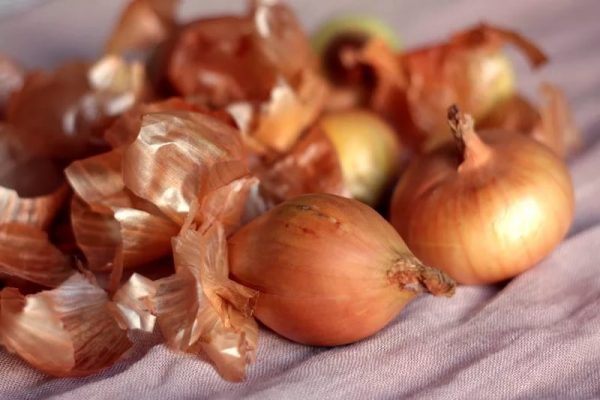
Using folk remedies, for example, onion peels, you can give your hair a beautiful shade
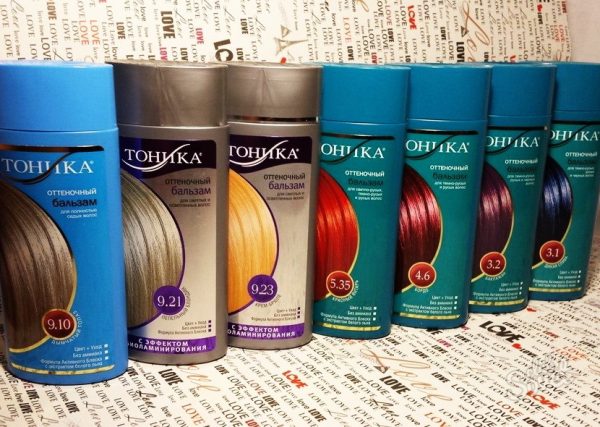
The color palette of tonics is very wide, however, when choosing the appropriate option, it is better to focus on your own hair tone
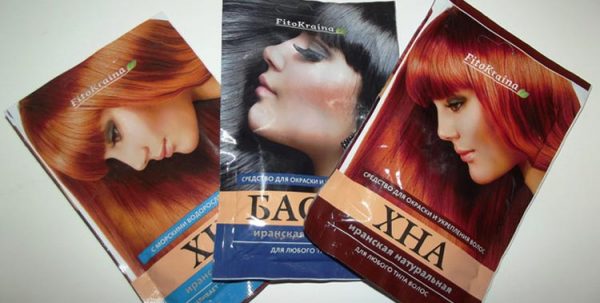
Since ancient times, beauties of the East have used crushed plant powder - henna and basma - to dye their hair.
Video: how to dye your hair with henna
Proper use of chemical paint
If a nursing mother nevertheless decides to dye her hair with persistent chemical compounds, she should consider the following points.
- There is no need to save money, but purchase only high-quality, expensive products that do not contain ammonia and hydrogen peroxide (the latter is important for blondes), enriched with nourishing oils and vitamins.
- If a woman has previously used natural dyes, the effect of the chemical dye may be weakened or the shade will be far from the desired one (you need to wait about a month).
- It is better to avoid contact of paint directly with the scalp. In this regard, the best option is highlighting and coloring. During these procedures, the composition is applied to the strands at a distance of about 0.5–1 cm from the skin. Of course, it is best to entrust this work to a professional master. By the way, due to hormonal changes, a nursing mother’s hairstyle after using regular dye may turn out to be a non-uniform color. Therefore, highlighting or coloring strands will be very important.
- Before using a chemical, it is imperative to conduct a sensitivity test.
- If a woman dyes her hair at home, then after completing the procedure it is advisable for her to take a walk in the fresh air and ventilate the room well.
- Even if ammonia-free paint is used, it is better for a nursing mother to skip one feeding: first express the milk and then give it to the baby (you can also use formula). This will reduce the risk to zero and reassure the woman.
- As for the frequency of hair coloring, you should use regular chemical dye no more than once a month (alternatively, you can simply tint the roots). Highlighting and coloring are updated every two to three months. It is better to carry out the first procedure after childbirth when the baby is at least a month old: let him get a little stronger (there will be less risk of allergies), and the woman’s hormonal levels begin to return to normal.
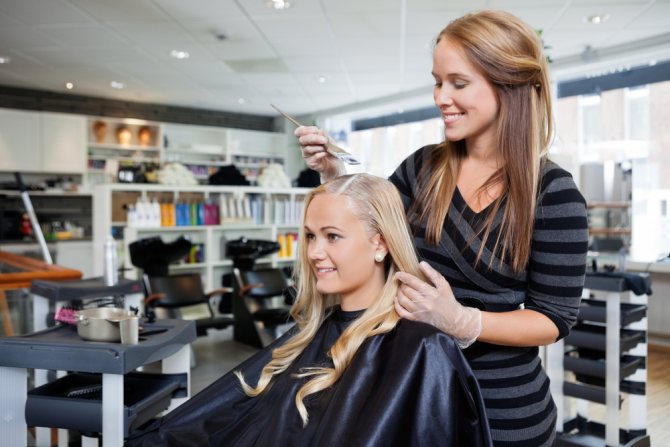
It is better to entrust the coloring procedure to a professional master in a beauty salon.
Arguments against dyeing
The most unsafe for mother and her baby are dyes with ammonia and hydrogen peroxide. These aggressive chemicals can cause negative reactions even under normal conditions, and during lactation the risk of personal intolerance to the compounds increases several times due to hormonal imbalance.
Harmful substances enter the body in two ways:
- through the air;
- through the skin.
Authoritative pediatrician Dr. Komarovsky claims that the first path is much more dangerous than the second. Through the lungs, ammonia vapors are very quickly absorbed into the blood and mixed with breast milk, after which they enter the baby’s body during feeding.
But ammonia physically cannot penetrate the skin in quantities dangerous to life or health. This means that the acrid smell of paint is more dangerous than its contact with the dermis.
The effect of paint on a baby
Negative reactions in a baby are possible only if you dye your hair in a poorly ventilated area or come into contact with it while the composition is on the hair. Inhaling ammonia can cause the following:
- severe allergic reactions;
- intoxication of the body;
- suffocation;
- swelling of the larynx and internal organs;
- irritation of mucous membranes.
Such reactions can be deadly for infants, so the possibility of their occurrence must be excluded. To do this, you should carry out the procedure in a well-ventilated area and walk in the fresh air for two hours after painting so that the harmful fumes are completely eliminated. Taking precautions will help keep your baby safe.
Risks for mom
A woman can also be harmed by using persistent products. In addition to inhaling ammonia fumes, she is exposed to other risks. Coloring can cause negative skin reactions, so each product should be checked for personal tolerance, even if there were no problems with its use before pregnancy.
Other undesirable consequences are also possible:
- uneven color development;
- hue distortion;
- quick rinse.
These phenomena are associated with hormonal changes in the young mother. Due to the lack and excess of certain substances in the body, hair can change its structure. Hairdressers note that after childbirth they become 2-3 shades darker, and pores appear in the cuticular layer. This causes the unpredictable appearance of color.
To avoid disappointment, it is best to contact an experienced stylist who can choose the right dye for you.
Expert opinion of Dr. Komarovsky on hair coloring during lactation
Dr. E. Komarovsky identifies several ways that potential allergens and toxic substances enter a woman’s body: orally, by injection, through the skin and the respiratory tract. When using hair dye, nursing mothers usually worry about the penetration of chemicals through the skin, which is actually not very important. The most dangerous route is inhalation.
And in this aspect, hair dyes (and floor paints), nail polish (and parquet polish) are equally dangerous. I fully admit that the risk of short-term exposure can be minimized, especially if you apply makeup not at home, but in a hairdresser, if after the procedure you take a walk in the fresh air and “breathe,” if you do not skimp on the quality of hair dye. But there is a risk, that's for sure.
E. Komarovsky
https://www.komarovskiy.net/faq/okraska-volos-pri-kormlenii-grudyu.html
The doctor reminds that responsibility for the procedure remains with the woman. However, if we are talking about maintaining a warm relationship with her husband or the psychological comfort of a young mother, then her appearance needs to be put in order.
If the husband begins to actively look around or if complexes arise due to the fact that he really wants to be “white and fluffy,” then definitely put on makeup.
E. Komarovsky
https://www.komarovskiy.net/faq/okraska-volos-pri-kormlenii-grudyu.html
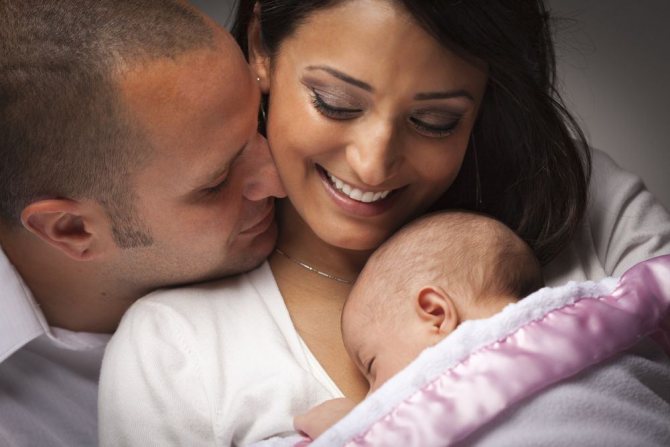
It is important for the baby that the parents love each other, so the mother must take care of her appearance
Is it possible for a nursing mother to dye her hair?
A woman’s hair always attracts attention, and the question of whether it is possible to dye your hair while breastfeeding is very relevant. Every mother should remember that any chemical components can cause allergic reactions, since hormonal levels have not yet returned to normal. In addition, all doctors and specialists talk about the dangers of paint, since the vapors enter the woman’s body and then easily penetrate into the milk.
We recommend reading: What antibiotics can you take while breastfeeding?
During pregnancy and lactation, it is recommended that a nursing mother dye her hair using natural-based formulations, or using folk recipes. Any, even the most gentle composition, can cause allergies in infants, this should be taken into account. Therefore, if the question arises whether it is possible to wear makeup while breastfeeding, it is worth remembering.
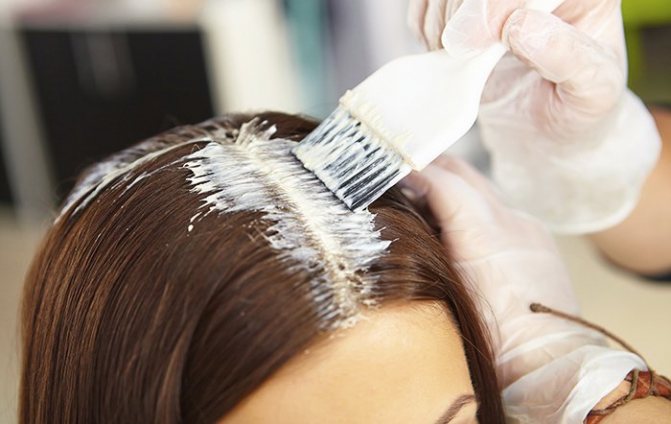
Recommendations for safe hair coloring during breastfeeding
The decision to paint is primarily made by the mother herself, only she alone knows what will bring her more positive emotions - a new hairstyle or peace of mind for the baby’s health. If you make a positive decision, you should choose tinted shampoos and balms, tonic, ammonia-free dyes, henna dyeing, and also follow a number of simple recommendations for safely changing hair color. This:
- It is better to entrust coloring to a professional stylist than to carry out the procedure at home;
- It’s much safer to do highlighting; dyes do not penetrate the scalp;
- hair dye must contain natural dyes; these products are usually more expensive than ammonia dyeing, but much more effective;
- as an alternative, use natural dyes - lemon juice, like chamomile, will whiten hair, henna and basma are suitable for brunettes;
- after the procedure, try not to contact the baby for about an hour or two;
- For less impact on the child’s body, it is worth expressing the milk before coloring and feeding it after. You should not breastfeed your baby right away.
The difficulty for young mothers is that they have no one to consult with to make a decision. Some people still don’t dare to dye their hair during breastfeeding, some mothers don’t inform their hairdresser about feeding, and for the hairdressers themselves, this is primarily a job. But you always need to remember about the possible negative consequences and risks for the baby and make the only right decision for yourself personally.
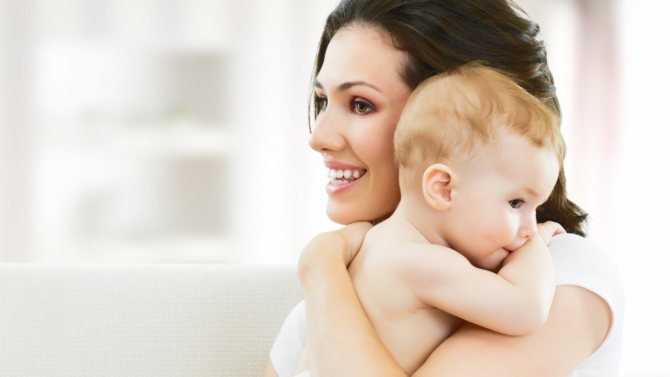
If you want to dye your hair, your mother should decide what will bring her more positive emotions - a new hairstyle or peace of mind for the baby’s health.
Choosing paint for hot water
Chemical dyes usually contain ammonia or hydrogen peroxide. These substances are irritating to the scalp. During breastfeeding, hormonal levels change, and paint can cause allergic reactions. At the same time, previously the dye could be tolerated absolutely normally.
Hormonal changes during pregnancy and lactation usually lead to a woman's hair becoming several shades darker. The coloring result can also be unpredictable. The paint does not apply evenly, and the resulting shade does not match what is indicated on the package.
Which paint to choose for GW:
- If a woman decides to dye her hair during breastfeeding, then she needs to take safety precautions and choose the right dye. It is recommended to use a product that does not contain ammonia and hydrogen peroxide. Tinting products are also suitable. They do not contain metal ions, which makes the tonic safe for the health of mother and child. Details about ammonia-free paints and tips on choosing them can be found on our website.
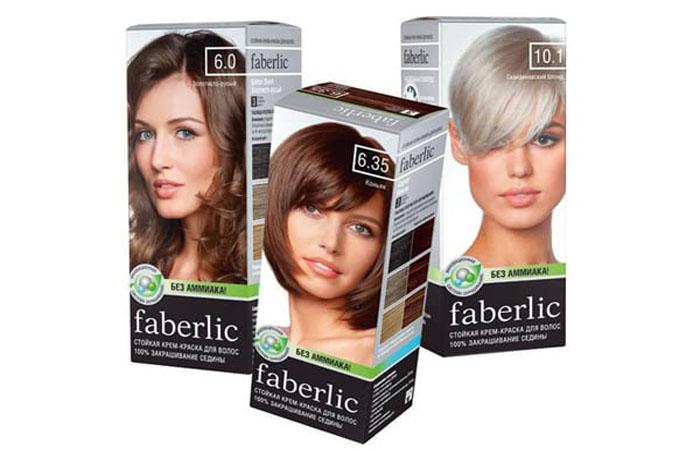
- During breastfeeding, it is recommended to choose gentle types of coloring, for example, highlighting. This is a type of coloring that does not involve contact with the scalp. The coloring composition is applied to each strand at a certain distance from the roots. The paint has minimal impact on the skin, will not cause allergies and will not penetrate the bloodstream. Is it possible to do highlighting during pregnancy and lactation, why is it dangerous, read on our website.
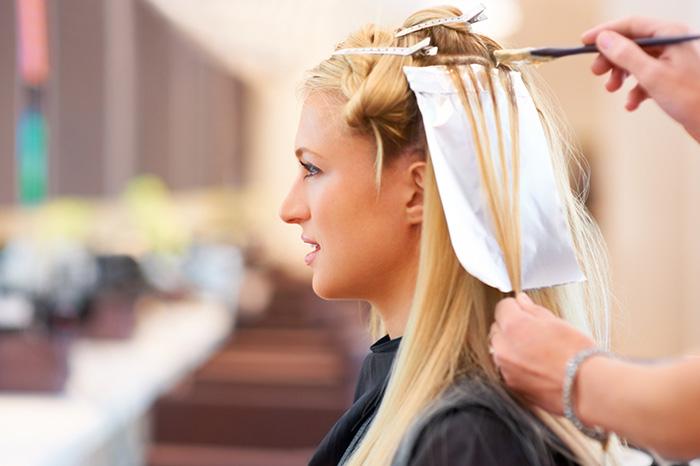
- Breastfeeding women are recommended to use natural dyes. For redheads, henna is suitable, which gives a bright red tint. Brown-haired women can use onion peels, tea leaves or walnut peels. Brunettes can dye their hair with henna in combination with basma. They give a rich dark shade. Blondes can use lemon juice, which will lighten their hair several shades. A decoction of chamomile will also work. It will not only lighten, but also give the curls a golden hue.
